Gerald Schaefer
HPL-ESS: Hybrid Pseudo-Labeling for Unsupervised Event-based Semantic Segmentation
Mar 25, 2024



Abstract:Event-based semantic segmentation has gained popularity due to its capability to deal with scenarios under high-speed motion and extreme lighting conditions, which cannot be addressed by conventional RGB cameras. Since it is hard to annotate event data, previous approaches rely on event-to-image reconstruction to obtain pseudo labels for training. However, this will inevitably introduce noise, and learning from noisy pseudo labels, especially when generated from a single source, may reinforce the errors. This drawback is also called confirmation bias in pseudo-labeling. In this paper, we propose a novel hybrid pseudo-labeling framework for unsupervised event-based semantic segmentation, HPL-ESS, to alleviate the influence of noisy pseudo labels. In particular, we first employ a plain unsupervised domain adaptation framework as our baseline, which can generate a set of pseudo labels through self-training. Then, we incorporate offline event-to-image reconstruction into the framework, and obtain another set of pseudo labels by predicting segmentation maps on the reconstructed images. A noisy label learning strategy is designed to mix the two sets of pseudo labels and enhance the quality. Moreover, we propose a soft prototypical alignment module to further improve the consistency of target domain features. Extensive experiments show that our proposed method outperforms existing state-of-the-art methods by a large margin on the DSEC-Semantic dataset (+5.88% accuracy, +10.32% mIoU), which even surpasses several supervised methods.
Watermarking in Secure Federated Learning: A Verification Framework Based on Client-Side Backdooring
Nov 14, 2022



Abstract:Federated learning (FL) allows multiple participants to collaboratively build deep learning (DL) models without directly sharing data. Consequently, the issue of copyright protection in FL becomes important since unreliable participants may gain access to the jointly trained model. Application of homomorphic encryption (HE) in secure FL framework prevents the central server from accessing plaintext models. Thus, it is no longer feasible to embed the watermark at the central server using existing watermarking schemes. In this paper, we propose a novel client-side FL watermarking scheme to tackle the copyright protection issue in secure FL with HE. To our best knowledge, it is the first scheme to embed the watermark to models under the Secure FL environment. We design a black-box watermarking scheme based on client-side backdooring to embed a pre-designed trigger set into an FL model by a gradient-enhanced embedding method. Additionally, we propose a trigger set construction mechanism to ensure the watermark cannot be forged. Experimental results demonstrate that our proposed scheme delivers outstanding protection performance and robustness against various watermark removal attacks and ambiguity attack.
MuSCLe: A Multi-Strategy Contrastive Learning Framework for Weakly Supervised Semantic Segmentation
Jan 18, 2022Abstract:Weakly supervised semantic segmentation (WSSS) has gained significant popularity since it relies only on weak labels such as image level annotations rather than pixel level annotations required by supervised semantic segmentation (SSS) methods. Despite drastically reduced annotation costs, typical feature representations learned from WSSS are only representative of some salient parts of objects and less reliable compared to SSS due to the weak guidance during training. In this paper, we propose a novel Multi-Strategy Contrastive Learning (MuSCLe) framework to obtain enhanced feature representations and improve WSSS performance by exploiting similarity and dissimilarity of contrastive sample pairs at image, region, pixel and object boundary levels. Extensive experiments demonstrate the effectiveness of our method and show that MuSCLe outperforms the current state-of-the-art on the widely used PASCAL VOC 2012 dataset.
HMS-OS: Improving the Human Mental Search Optimisation Algorithm by Grouping in both Search and Objective Space
Dec 03, 2021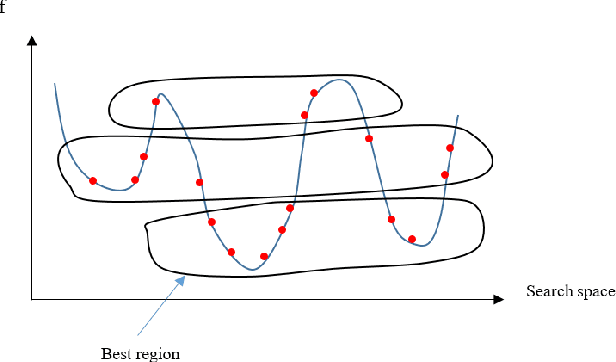
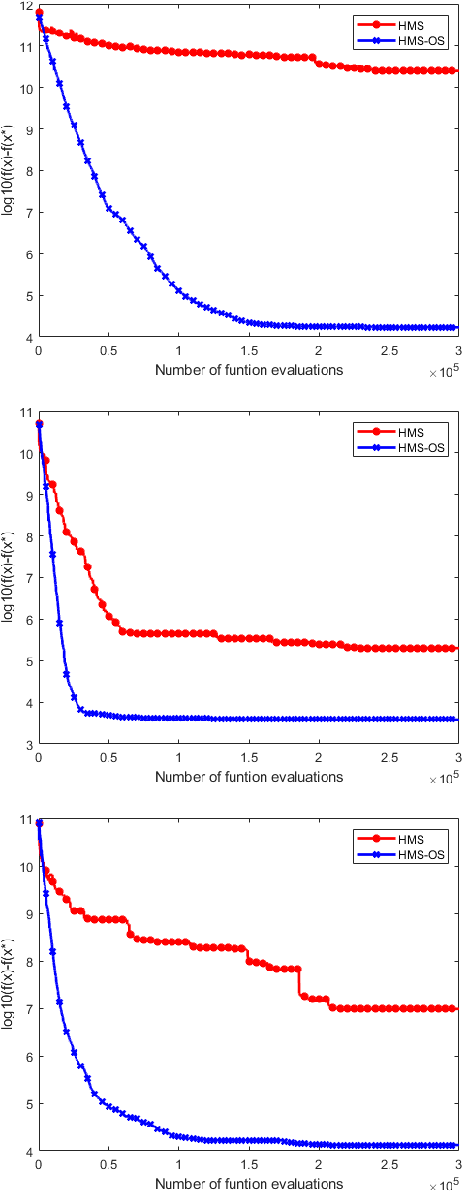
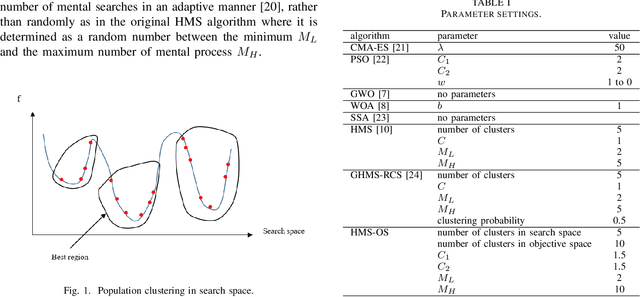

Abstract:The human mental search (HMS) algorithm is a relatively recent population-based metaheuristic algorithm, which has shown competitive performance in solving complex optimisation problems. It is based on three main operators: mental search, grouping, and movement. In the original HMS algorithm, a clustering algorithm is used to group the current population in order to identify a promising region in search space, while candidate solutions then move towards the best candidate solution in the promising region. In this paper, we propose a novel HMS algorithm, HMS-OS, which is based on clustering in both objective and search space, where clustering in objective space finds a set of best candidate solutions whose centroid is then also used in updating the population. For further improvement, HMSOS benefits from an adaptive selection of the number of mental processes in the mental search operator. Experimental results on CEC-2017 benchmark functions with dimensionalities of 50 and 100, and in comparison to other optimisation algorithms, indicate that HMS-OS yields excellent performance, superior to those of other methods.
MCS-HMS: A Multi-Cluster Selection Strategy for the Human Mental Search Algorithm
Nov 20, 2021



Abstract:Population-based metaheuristic algorithms have received significant attention in global optimisation. Human Mental Search (HMS) is a relatively recent population-based metaheuristic that has been shown to work well in comparison to other algorithms. However, HMS is time-consuming and suffers from relatively poor exploration. Having clustered the candidate solutions, HMS selects a winner cluster with the best mean objective function. This is not necessarily the best criterion to choose the winner group and limits the exploration ability of the algorithm. In this paper, we propose an improvement to the HMS algorithm in which the best bids from multiple clusters are used to benefit from enhanced exploration. We also use a one-step k-means algorithm in the clustering phase to improve the speed of the algorithm. Our experimental results show that MCS-HMS outperforms HMS as well as other population-based metaheuristic algorithms
An Enhanced Differential Evolution Algorithm Using a Novel Clustering-based Mutation Operator
Sep 20, 2021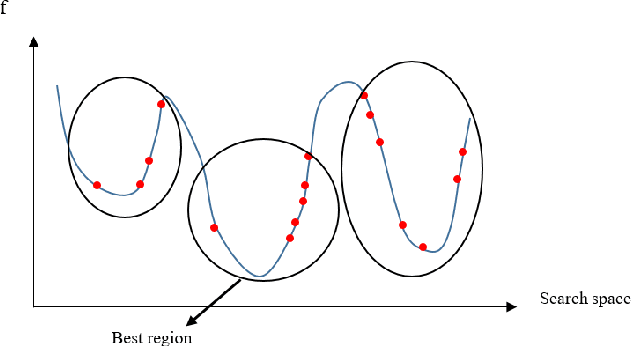
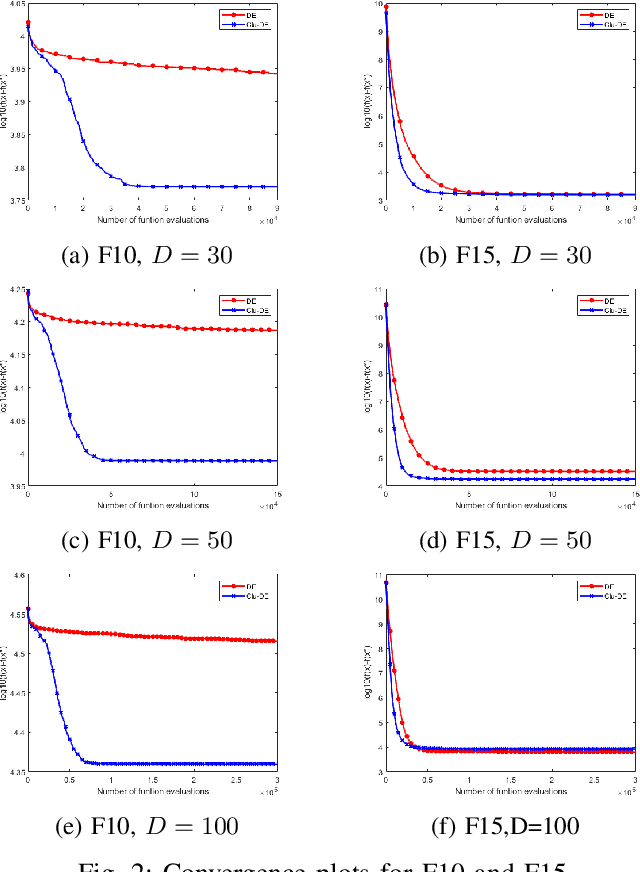
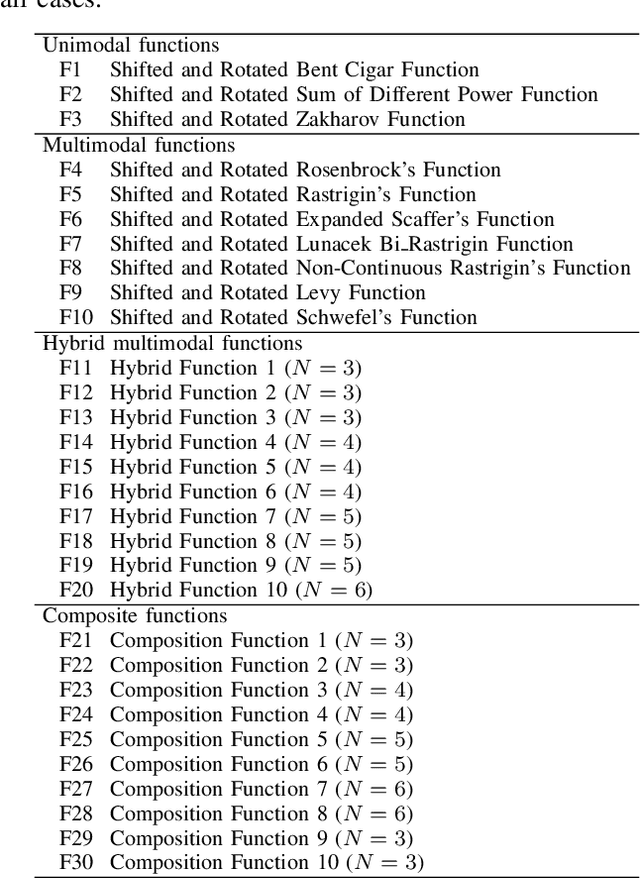

Abstract:Differential evolution (DE) is an effective population-based metaheuristic algorithm for solving complex optimisation problems. However, the performance of DE is sensitive to the mutation operator. In this paper, we propose a novel DE algorithm, Clu-DE, that improves the efficacy of DE using a novel clustering-based mutation operator. First, we find, using a clustering algorithm, a winner cluster in search space and select the best candidate solution in this cluster as the base vector in the mutation operator. Then, an updating scheme is introduced to include new candidate solutions in the current population. Experimental results on CEC-2017 benchmark functions with dimensionalities of 30, 50 and 100 confirm that Clu-DE yields improved performance compared to DE.
Differential Evolution-based Neural Network Training Incorporating a Centroid-based Strategy and Dynamic Opposition-based Learning
Jun 29, 2021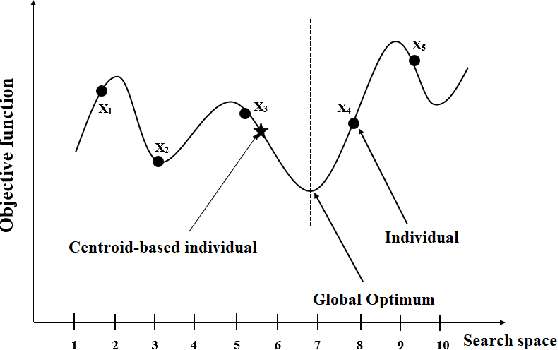
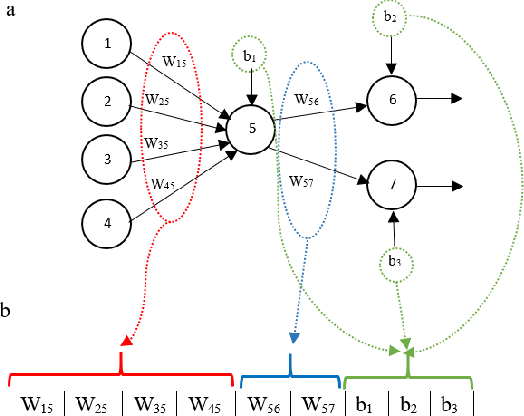
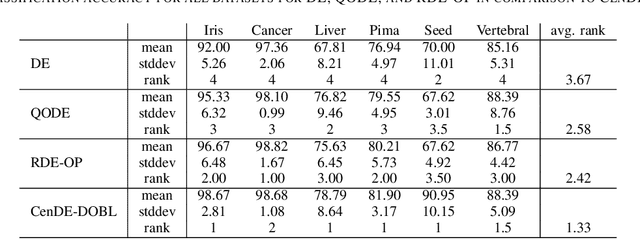
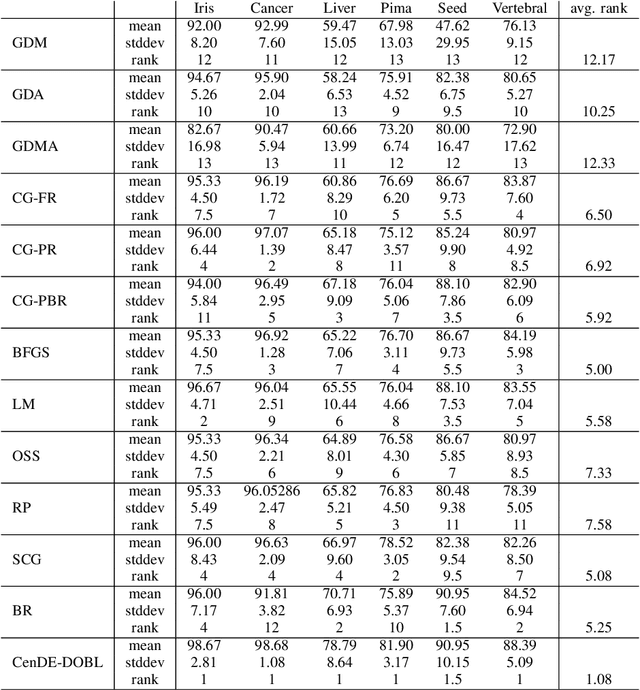
Abstract:Training multi-layer neural networks (MLNNs), a challenging task, involves finding appropriate weights and biases. MLNN training is important since the performance of MLNNs is mainly dependent on these network parameters. However, conventional algorithms such as gradient-based methods, while extensively used for MLNN training, suffer from drawbacks such as a tendency to getting stuck in local optima. Population-based metaheuristic algorithms can be used to overcome these problems. In this paper, we propose a novel MLNN training algorithm, CenDE-DOBL, that is based on differential evolution (DE), a centroid-based strategy (Cen-S), and dynamic opposition-based learning (DOBL). The Cen-S approach employs the centroid of the best individuals as a member of population, while other members are updated using standard crossover and mutation operators. This improves exploitation since the new member is obtained based on the best individuals, while the employed DOBL strategy, which uses the opposite of an individual, leads to enhanced exploration. Our extensive experiments compare CenDE-DOBL to 26 conventional and population-based algorithms and confirm it to provide excellent MLNN training performance.
CryoNuSeg: A Dataset for Nuclei Instance Segmentation of Cryosectioned H&E-Stained Histological Images
Jan 02, 2021

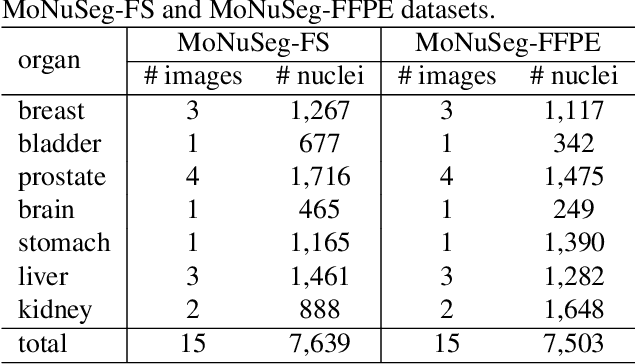
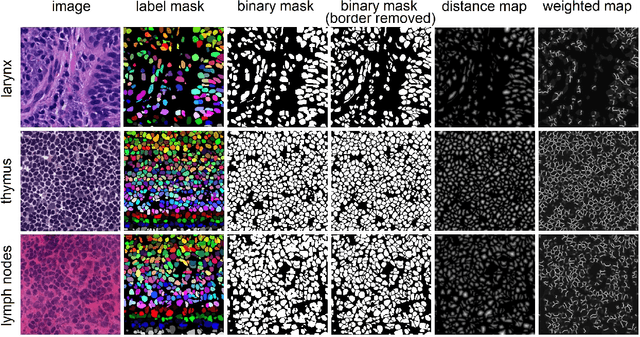
Abstract:Nuclei instance segmentation plays an important role in the analysis of Hematoxylin and Eosin (H&E)-stained images. While supervised deep learning (DL)-based approaches represent the state-of-the-art in automatic nuclei instance segmentation, annotated datasets are required to train these models. There are two main types of tissue processing protocols, namely formalin-fixed paraffin-embedded samples (FFPE) and frozen tissue samples (FS). Although FFPE-derived H&E stained tissue sections are the most widely used samples, H&E staining on frozen sections derived from FS samples is a relevant method in intra-operative surgical sessions as it can be performed fast. Due to differences in the protocols of these two types of samples, the derived images and in particular the nuclei appearance may be different in the acquired whole slide images. Analysis of FS-derived H&E stained images can be more challenging as rapid preparation, staining, and scanning of FS sections may lead to deterioration in image quality. In this paper, we introduce CryoNuSeg, the first fully annotated FS-derived cryosectioned and H&E-stained nuclei instance segmentation dataset. The dataset contains images from 10 human organs that were not exploited in other publicly available datasets, and is provided with three manual mark-ups to allow measuring intra-observer and inter-observer variability. Moreover, we investigate the effects of tissue fixation/embedding protocol (i.e., FS or FFPE) on the automatic nuclei instance segmentation performance of one of the state-of-the-art DL approaches. We also create a baseline segmentation benchmark for the dataset that can be used in future research. A step-by-step guide to generate the dataset as well as the full dataset and other detailed information are made available to fellow researchers at https://github.com/masih4/CryoNuSeg.
Pollen Grain Microscopic Image Classification Using an Ensemble of Fine-Tuned Deep Convolutional Neural Networks
Nov 15, 2020



Abstract:Pollen grain micrograph classification has multiple applications in medicine and biology. Automatic pollen grain image classification can alleviate the problems of manual categorisation such as subjectivity and time constraints. While a number of computer-based methods have been introduced in the literature to perform this task, classification performance needs to be improved for these methods to be useful in practice. In this paper, we present an ensemble approach for pollen grain microscopic image classification into four categories: Corylus Avellana well-developed pollen grain, Corylus Avellana anomalous pollen grain, Alnus well-developed pollen grain, and non-pollen (debris) instances. In our approach, we develop a classification strategy that is based on fusion of four state-of-the-art fine-tuned convolutional neural networks, namely EfficientNetB0, EfficientNetB1, EfficientNetB2 and SeResNeXt-50 deep models. These models are trained with images of three fixed sizes (224x224, 240x240, and 260x260 pixels) and their prediction probability vectors are then fused in an ensemble method to form a final classification vector for a given pollen grain image. Our proposed method is shown to yield excellent classification performance, obtaining an accuracy of of 94.48% and a weighted F1-score of 94.54% on the ICPR 2020 Pollen Grain Classification Challenge training dataset based on five-fold cross-validation. Evaluated on the test set of the challenge, our approach achieved a very competitive performance in comparison to the top ranked approaches with an accuracy and a weighted F1-score of 96.28% and 96.30%, respectively.
Investigating and Exploiting Image Resolution for Transfer Learning-based Skin Lesion Classification
Jun 25, 2020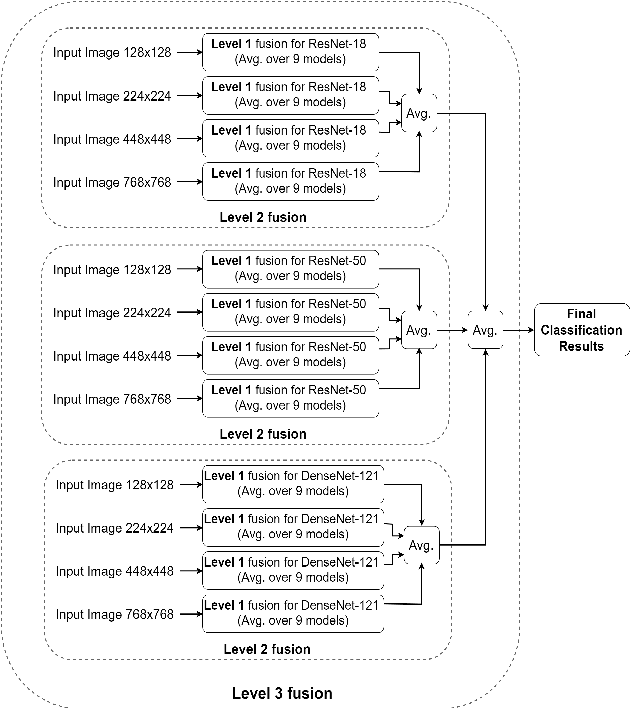

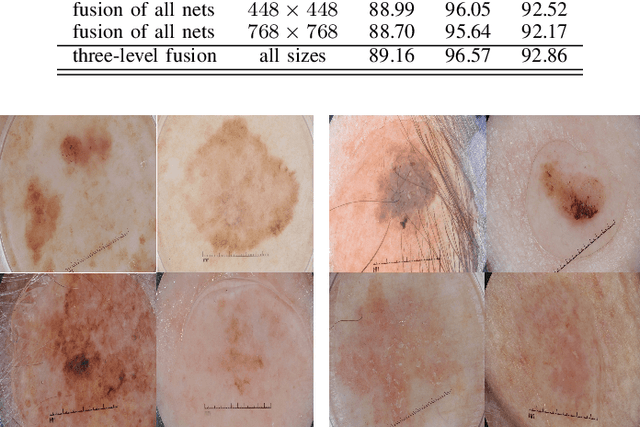

Abstract:Skin cancer is among the most common cancer types. Dermoscopic image analysis improves the diagnostic accuracy for detection of malignant melanoma and other pigmented skin lesions when compared to unaided visual inspection. Hence, computer-based methods to support medical experts in the diagnostic procedure are of great interest. Fine-tuning pre-trained convolutional neural networks (CNNs) has been shown to work well for skin lesion classification. Pre-trained CNNs are usually trained with natural images of a fixed image size which is typically significantly smaller than captured skin lesion images and consequently dermoscopic images are downsampled for fine-tuning. However, useful medical information may be lost during this transformation. In this paper, we explore the effect of input image size on skin lesion classification performance of fine-tuned CNNs. For this, we resize dermoscopic images to different resolutions, ranging from 64x64 to 768x768 pixels and investigate the resulting classification performance of three well-established CNNs, namely DenseNet-121, ResNet-18, and ResNet-50. Our results show that using very small images (of size 64x64 pixels) degrades the classification performance, while images of size 128x128 pixels and above support good performance with larger image sizes leading to slightly improved classification. We further propose a novel fusion approach based on a three-level ensemble strategy that exploits multiple fine-tuned networks trained with dermoscopic images at various sizes. When applied on the ISIC 2017 skin lesion classification challenge, our fusion approach yields an area under the receiver operating characteristic curve of 89.2% and 96.6% for melanoma classification and seborrheic keratosis classification, respectively, outperforming state-of-the-art algorithms.
 Add to Chrome
Add to Chrome Add to Firefox
Add to Firefox Add to Edge
Add to Edge